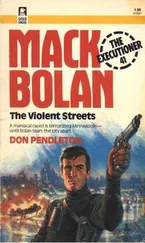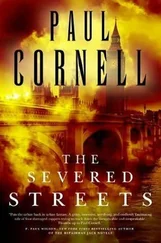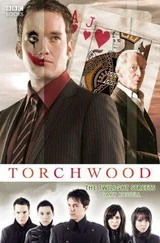A vigil began at the trauma unit when Cassidy’s young wife arrived with two other Western men. Then came the parade of white hats and gold trim-colonels and deputy commissioners-followed by detectives, surgeons, a Catholic priest who offered last rites.
In its earliest hours, the investigation traveled the time-honored path of all police shootings. Enraged detectives and Western uniforms flooded the area around Mosher and Appleton, grabbing anyone and everyone hanging on the corners. Residents, street dealers, addicts, derelicts-everything that walked was jacked up, intimidated, threatened. Two bullets fired at point-blank range were a declaration of war, and whatever lines of demarcation had once existed between police and the Western locals were suddenly swept aside.
More than any other supervisor in homicide, McLarney led the charge on that first, miserable night, raging from one possible witness to the next, ranting, raving, throwing the fear of God, the devil and T. P. McLarney into the hearts of everyone and everything in his path. When a police officer gets shot, the I-ain’t-seen-nuthin’ routine doesn’t play anymore; even so, McLarney’s intensity on that first night bordered on recklessness. It was viewed by the detectives under him almost as an act of contrition, a wild-eyed attempt to compensate for the simple fact that when the call came, he had been drinking beer.
In truth, McLarney’s early departure in the late hours of his shift meant nothing. Homicide work is largely flex time, with one shift blending into another as paperwork is completed and fresh troops arrive. Some men leave early, some late, some work overtime on fresh cases, some are at the bar a few minutes after the relief comes walking off the elevators. No one can anticipate the arrival of a red ball, but in McLarney’s heart of hearts that kind of rationalization meant little. This was more than a red ball, and it mattered to McLarney that when Gene Cassidy got shot down in the street, he was not on post.
The sergeant’s uncontrolled rage on that first night made the other detectives cautious. Several men-including Lieutenant D’Addario-tried to calm him, to tell him that he was too close to the situation, to suggest that he go home, that he leave the case to detectives who had not served with Cassidy, detectives who could work the shooting as if it were a crime-a vicious crime, but not a personal wound.
In one confrontation on the street, McLarney actually threw a punch that shattered the bones of his fist. Months later, in fact, it would become a standard joke in the unit: McLarney broke his hand in three places on the night Cassidy was shot.
In three places?
Yeah, in the 1800 block of Division Street, in the 1600 block of Laurens, in the…
McLarney was out of control, but he couldn’t leave. Nor did anyone really expect him to. Whatever else they felt about his involvement in that first night’s investigation, the men who worked with McLarney understood his rage.
At 2:00 A.M., about three hours after the shooting, an anonymous caller dialed 911 and told police to go to a North Stricker Street house, where they would find the gun used to shoot the officer. No weapon was discovered, but the detectives nonetheless grabbed a sixteen-year-old at that address and took him downtown, where he began by denying any involvement in the incident. The questioning was both prolonged and heated, especially after detectives did a leuco malachite test on the bottom of the kid’s sneakers and came up positive for blood. At that point, it was all the detectives could do to keep McLarney away from the terrified, beleaguered kid who, after several hours of heated interrogation, finally gave up one Anthony T. Owens as the gunman. A second man, Clifton Frazier, was named as being present at the time of the shooting but otherwise uninvolved. The young witness put himself within a few feet of the shooting and declared that he had seen the officer wade into a crowded drug corner before being shot without provocation by the eighteen-year-old Owens, a small-time narcotics dealer.
Detectives working around the clock typed up arrest and search warrants for Owens, got them signed by the duty judge, then hit Owens’s apartment in Northwest Baltimore at six-thirty that evening. The raid produced little, but before detectives left the address, another anonymous caller said that the man who shot the police was inside a Fulton Street rowhouse. Police raced to that address and failed to find Owens. They did, however, discover twenty-four-year-old Clifton Frazier, the man named as a witness. Frazier was taken downtown, where he refused to make a statement and demanded a lawyer. Wanted on a seemingly unrelated assault warrant, Frazier was taken to the city jail, but bailed out hours after his hearing with a court commissioner.
Late that evening, the younger sister of the reluctant sixteen-year-old witness showed up at the homicide unit and declared that she, too, had been on Appleton Street with several young girlfriends and had seen the police get shot when he walked onto the crowded corner. She claimed that just before the shooting, she had seen Clifton Frazier nudge Owens and say something. The girl also insisted that after the shooting, Owens fled in a black Ford Escort driven by Frazier. Based on that statement, detectives again began looking for Frazier; they found that after being released on bail, he had gone on the wing. They issued a second warrant for him and continued the search for Owens. Later that same night, as the thirteen-year-old girl was initialing the pages of her statement, Anthony Owens walked up to the deskman at the Central District.
“I’m the man they say shot the police.”
He had gone to the Central for fear that he would be beaten, or even killed, if he was taken on the streets of the Western, a fear that was in no way unjustified. The other detectives managed to keep McLarney away from the suspect, but Owens was not about to make it through processing, the district lockup and the ride to the city jail without taking some licks. It was brutal, of course, but not indiscriminate, and perhaps Anthony Owens understood that it was in some way required when a police gets shot twice in the head. He took the blows that came his way and made no complaint.
For days after surgery, Gene Cassidy drifted between life and death, lying in a semicomatose state in the intensive care unit with his wife, mother and brother at his bedside. The brass had disappeared after the first night’s vigil, but the family was joined by friends and officers from the Western. Each day, the doctors adjusted and readjusted the odds, but it was two full weeks before Cassidy gave them a clue, squirming restlessly as a trauma unit nurse worked with his bandages.
“Oh, Gene,” said the nurse, “life’s a bear.”
“Yeah,” said Cassidy, struggling with each word, “a… real… bear.”
He was blind. The bullet in his brain had also destroyed his senses of smell and taste. Beyond that permanent damage, he would have to learn to talk again, to walk, to coordinate his every movement. Once their patient’s survival was assured, the surgeons proposed a four-month hospital stay followed by months of physical therapy. But, incredibly, by the third week, Cassidy was walking with the help of an escort and relearning vocabulary in sessions with a speech therapist, and it became increasingly clear that his brain functions were intact. He was discharged from the trauma unit at the end of a month.
As Cassidy returned to the world of the living, McLarney and Gary Dunnigan, the primary on the case, were there with questions, hoping Cassidy could strengthen the case against Owens by recalling details of the shooting independently, perhaps even identifying or describing the shooter in some way. But to his great frustration, the last thing Cassidy could remember was eating a hot dog at his father-in-law’s house before going to work that day. With the exception of a brief image of Jim Bowen’s face leaning over him in the ambo-a scene the doctors believe he could not have witnessed-he recalled nothing.
Читать дальше












